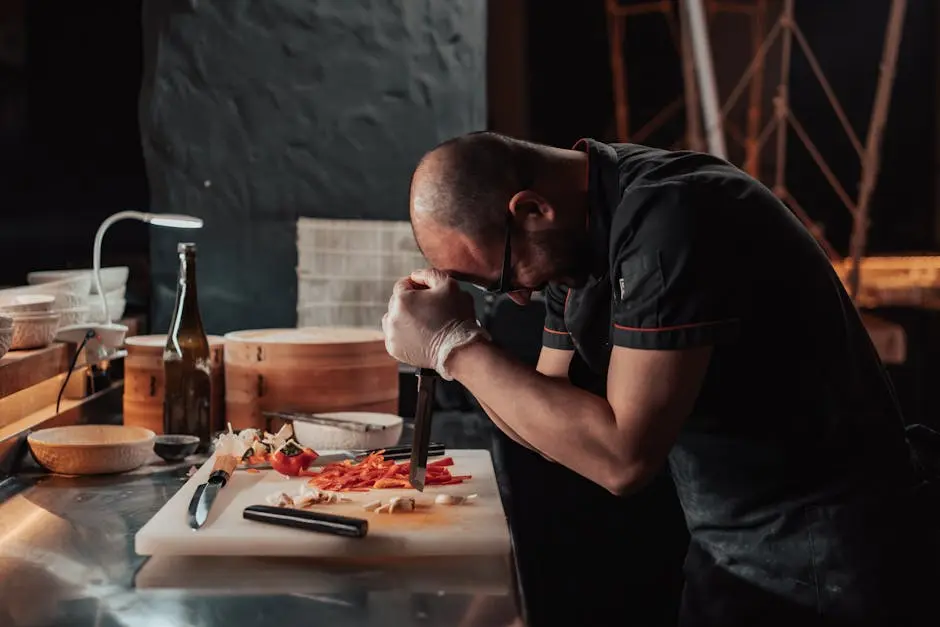Cooking isn’t just about following a recipe; it’s about mastering techniques that elevate your dishes and make every meal unforgettable. Our head chef has shared some tried-and-true culinary methods that turn ingredients into masterpieces. Whether you’re a seasoned cook or just starting out, these techniques will help you create meals that impress and delight.
1. The Magic of Proper Seasoning
Understanding how to season your food is crucial for flavor enhancement. Our head chef highlights the importance of salt, herbs, and spices to bring out the natural flavors of your ingredients.
But seasoning goes beyond just adding salt. It’s about knowing when and how to add different elements to create a symphony of flavors. For instance, you should season at multiple points during cooking, not just at the end. This gradual build-up of seasoning allows the flavors to permeate the dish more thoroughly.
Moreover, each herb has its own unique profile and impact on the dish. Fresh herbs can lend brightness, while dried herbs provide depth. Experimenting with herbs native to different cuisines can introduce exciting complexities. Don’t shy away from trial and error; this is how you discover the perfect balance for your palate.
2. The Art of Searing
Searing meat creates a delicious crust and locks in moisture. Learn how to achieve the perfect sear, which adds depth and richness to your dishes.
But why is searing so crucial? When meat hits a hot surface, a chemical reaction occurs—the Maillard reaction—this gives that beautiful brown crust that everyone craves. Our head chef recommends letting the meat come to room temperature before searing; this results in a more even cook and a beautifully caramelized exterior.
Pairing your seared dishes with contrasting textures or flavors can transform your plate. Consider serving that perfectly seared steak with a zesty chimichurri or a smooth mashed potato. The interplay of flavors and mouthfeel will elevate your dish to a whole new level.
3. Perfecting the Cooking Temperature
Temperature is key in cooking. Our head chef explains how to control heat for various cooking methods, ensuring perfect results every time.
Understanding the basics of heat is fundamental to any chef. High heat for searing, medium heat for sautéing, and low heat for simmering each serve distinct purposes. Using a high-quality thermometer can also help you gauge the doneness of meats, which is vital for both taste and food safety.
Ultimately, knowing how to switch between temperatures during cooking can lead to harmonious results. For example, Cooking the perfect steak is a precise art, where even a 1–2°C difference can noticeably affect the texture, juiciness, and overall flavour. A rare steak, cooked to around 49–52°C, is soft with a deep red centre and a delicate, buttery mouthfeel. Medium rare, at 54–57°C, is widely regarded as the ideal doneness—tender, juicy, and full of flavour with a warm red centre. As the temperature rises to medium (60–63°C), the steak becomes slightly firmer with a warm pink centre and a more balanced texture. Medium well (65–68°C) brings a firmer bite and minimal pink, while well done (71°C+) results in a fully cooked steak with no pink and a drier, chewier texture. This small temperature range makes a big difference, which is why chefs rely on precision—just a couple of degrees can take a steak from perfectly tender to overdone..
4. Creating Flavor Depth with Layering
Layering flavors is a technique that adds complexity to your dishes. From sautéed aromatics to finishing touches, discover how to build a flavor profile like a pro.
Begin with a solid base; aromatics like onions, garlic, and ginger form the foundation of flavor in countless cuisines. Sauté them until they’re fragrant, then introduce your proteins and spices. This method allows the flavors to develop and intertwine throughout the cooking process.
Additionally, don’t forget about the importance of finishing touches, which can complement your initial flavors perfectly. A sprinkle of fresh herbs, a quick squeeze of lemon juice, or a drizzle of high-quality olive oil can elevate your dish to new heights. These little additions demonstrate the thoughtfulness of a curated experience, transforming your meal from ordinary to exceptional.
5. The Importance of Fresh Ingredients
Using fresh, high-quality ingredients can make a significant difference in your cooking. Learn how our head chef sources the best produce and proteins for every dish.
Fresh ingredients not only taste better but also bring vibrant colors and textures to your meals. Our head chef emphasizes visiting local farmers’ markets or joining a community-supported agriculture (CSA) program. This not only supports local economies but also ensures you’re getting the freshest ingredients available.
Moreover, knowing the source of your ingredients allows you to appreciate them more. Whether it’s a perfectly ripe tomato or freshly caught fish, understanding the story behind your ingredients can elevate your culinary creations and give you a deeper connection to your food.
6. Mindful Preparation and Mise en Place
Mise en place, or putting everything in its place, is about preparing all your ingredients before you start cooking. This technique streamlines the cooking process and helps prevent mistakes.
When everything is organized and within reach, cooking becomes a fluid process rather than a frantic scramble. This not only enhances efficiency but also gives you the freedom to immerse yourself in the cooking experience. No need to halt and chop garlic midway through sautéing when everything is ready to go!
Additionally, prepping your ingredients allows you to creatively engage with your cooking. Feel free to try out different flavor combinations without the added pressure of rushing. In essence, it’s about turning cooking into a joyful, stress-free exploration.
7. The Use of Acidity to Brighten Dishes
Acidity can elevate a dish, balancing flavors and adding brightness. Our head chef shares tips on using vinegar, citrus, and other acidic ingredients effectively.
A splash of vinegar or a squeeze of lemon can transform a dish from good to unforgettable. But it’s all about balance. You want to enhance flavors without overpowering them. Experimenting with different types of acidity—like balsamic vinegar versus white wine vinegar—can offer a range of results and help you identify your unique flavor profile.
Don’t limit yourself to just traditional acidic ingredients; think outside the box. Fermented ingredients like kimchi or pickles can contribute both acidity and an exciting array of flavors, making your meals more intriguing. It’s all about the little details that create a memorable dining experience.
8. Finishing Touches that Wow
The final touches can transform a good meal into an unforgettable one. Explore how garnishes, drizzles, and expert plating can enhance the visual appeal and flavor of your dishes.
Presentation is key when it comes to meal enjoyment. The way you plate a dish can excite the eyes and prepare the palate for what’s to come. Think about contrasting colors, heights, and textures—stacking ingredients or fanning out slices can create stunning visuals.
Additionally, incorporating garnishes like microgreens, edible flowers, or a sprinkle of spices can elevate not just the look of your dish, but also its flavors. These finishing touches signal to your guests that you care about every aspect of the meal, turning an ordinary dinner into a memorable feast.

